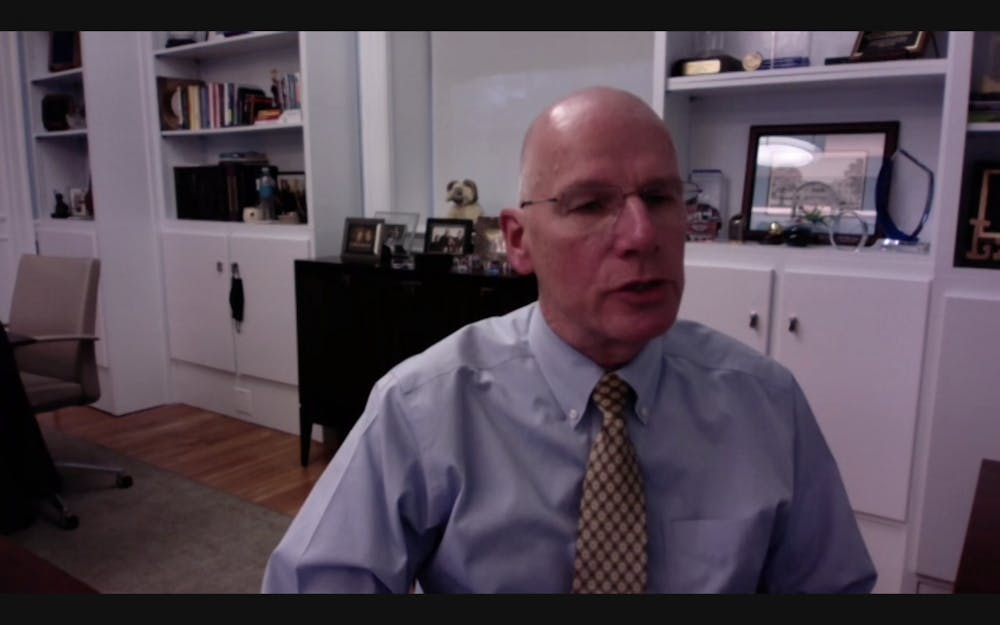The Faculty Executive Committee met Monday to discuss changes in the University's budget, COVID-19 measures and possible structural adjustments to the Faculty Committee on University Government.
Chancellor Kevin Guskiewicz and Executive Vice Chancellor and Provost Bob Blouin met with the committee for the first hour to explain budget changes and answer questions from committee members. Guskiewicz and Blouin also updated the committee on COVID-19 plans regarding vaccinations, testing and returning to in-person instruction.
What’s new?
- Guskiewicz opened his discussion by explaining the necessity of the 7.5 percent cut to the operational budget and 1.5 percent cut to the personnel budget, which are meant to eliminate the University’s $100 million structural deficit.
- “It’s been nearly a decade since we’ve had a balanced budget and it’s critical that we take the steps that we’re taking now to secure financial stability for the future of the University,” Guskiewicz said.
- Guskiewicz explained the University’s plan to change the distribution of facilities and administrative costs, which are funds typically associated with research grants that are reimbursed to the University to cover research costs. Currently, departments outside of the medical school receive approximately 20 percent of these funds and the University receives the rest; moving forward, they will shift over the next two years to receive 40 percent of these funds.
- “Several units have already run the models on that and they will benefit over time by that shift,” Guskiewicz said. “I can tell you that, as a dean of the college, that was my preference for that shift.”
- Guskiewicz and Blouin discussed the impact of the pandemic on the budget, including the University’s efforts to offset negative impacts to the budget through areas like athletics.
- “We've been able to maintain the TV revenue, which comes in both from football and from basketball,” Guskiewicz said.
- Guskiewicz highlighted campus-wide advocacy to get essential frontline University employees vaccinated. This group of employees includes housekeepers, food-service workers, maintenance staff, University police and faculty members teaching in-person.
- Blouin outlined primary factors the University is paying attention to as they decide about moving forward with in-person instruction this semester, including data from the Gillings School of Global Public Health, UNC hospitals and the Orange County Health Department.
- The University is now testing between 10,000 and 15,000 people per week, Blouin said.
- “The participation of our faculty, staff and students, particularly our students, has been very, very heartwarming,” Blouin said. “We have now I think we're getting more and more experienced around the testing sites.”
- Guskiewicz said information from in-person graduate classes, as well as in-person classes at N.C. State University show that community spread has not been an issue in the classroom so far.
Who’s on the committee?
The Faculty Executive Committee includes 14 faculty members, each representing a different department or school within the university.
What’s next?
The committee will meet next on Feb. 15 from 3 to 5 p.m.



